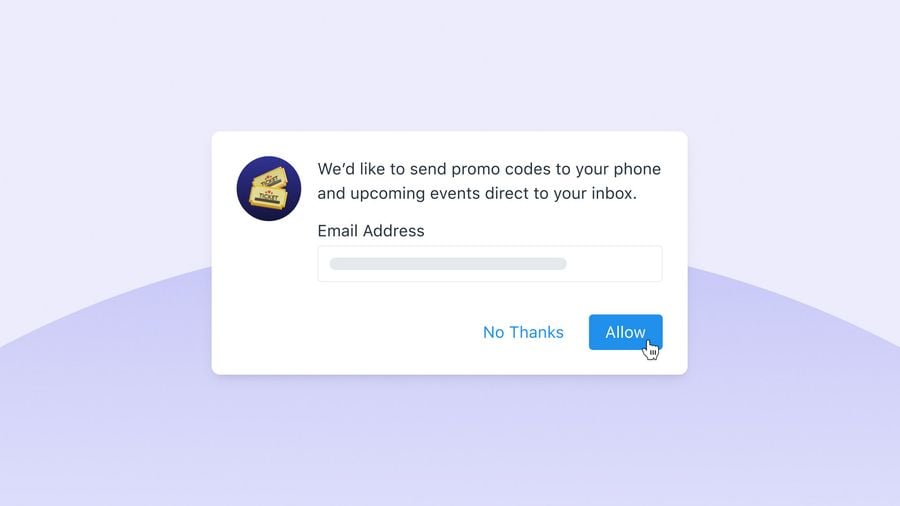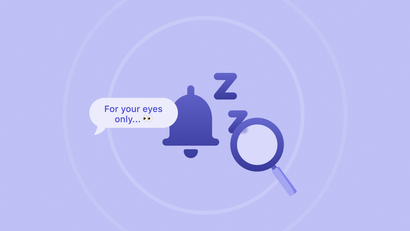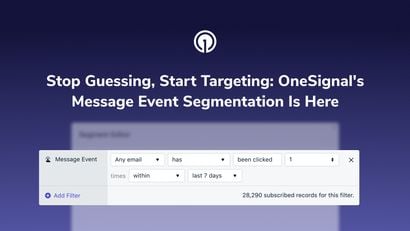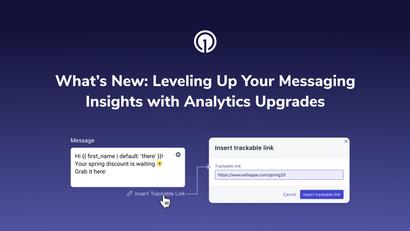Anyone who has been doing business online for the last 20-odd years can tell you that email newsletters are a cost-efficient way to engage interested users and fuel audience growth in harmony with other marketing channels.
But this isn’t 20-odd years ago, and if you’re looking for ways to increase email newsletter subscribers, you need to be aware of how the digital messaging landscape has changed and how to optimize your email newsletter for maximum appeal.
Want to get your email campaign ducks in a row before diving into newsletter best practices? Our free guide on optimizing email performance covers everything you need to boost email performance.
How Have Email Newsletters Changed Most Recently?
As technology has elevated the user experience exponentially in recent years, user expectations have equally reached new heights.
With the increasing adoption of mobile devices for checking emails, newsletters have shifted toward mobile-responsive designs to ensure a seamless viewing experience on smartphones and tablets. This includes a strong tendency towards a clean and minimalist design, focusing on concise and impactful content to avoid overwhelming subscribers on the go.
Most importantly, the last five years have seen an explosion of advanced personalization techniques for mobile-first platforms, allowing marketers to segment their email subscriber lists and send hyper-relevant content based on user preferences, behaviors, and demographics. The modern email newsletter now implements several sophisticated features to foster engagement and regularly nudge users toward conversions:
- Dynamic content blocks are now commonly used in newsletters to display different content to different segments of subscribers based on their unique preferences.
- Personalization extends beyond just the subscriber's profile. Newsletters can incorporate contextual information like weather, location-based offers, or time-sensitive events to make content more relevant.
- Some newsletters can integrate real-time data, such as current inventory levels or pricing, to provide accurate and up-to-date information to subscribers.
- Businesses incorporate user-generated content, such as reviews or testimonials, in newsletters to provide a more authentic and personalized experience
- Subject lines are tailored to individual preferences, increasing the likelihood of the email being opened.
Tactics to Capture More Email Newsletter Subscribers
These strategies are designed specifically to address today’s messaging standards with newsletters tuned for high-intent engagement.
1. Optimize Newsletter Sign-Up Forms
It’s the gateway for collecting subscriber information and the pivotal point in which your website visitors have shown explicit intent to engage with your brand on a regular basis — your newsletter sign-up form is not a place you can afford to mishandle.
This is your chance to establish new user relationships, collect valuable subscriber data, and drive brand engagement through low-cost email marketing. When thinking about newsletter sign-up forms, it’s best to start with the attitude of a tenacious real estate agent… location, location, location!
Placing a sign-up form prominently on your homepage, such as in the header, sidebar, or its own dedicated section, ensures that visitors are immediately exposed to the option to subscribe. Inserting sign-up forms within your blog posts or at the end of articles captures engaged readers who are interested in further updates on related topics. If you're running campaigns or offering specific content through landing pages, incorporate sign-up forms to capture leads who are specifically interested in the campaign's theme. Keep in mind, that some pages allow you to add a subscription popup, and some pages may not, depending on your CMS integrations and current email marketing software.
To read more about how Blue Wizard, a mobile gaming studio, boosted their email newsletter subscribers with the addition of an email capture web prompt, check out the case study.
The copy on your sign-up form should be straightforward and concise. Make it abundantly clear what subscribers will be receiving from you, how often they’ll be receiving it, and what value it brings to them. Consider creative approaches to your CTA (call to action) to resonate with your target audience. Whether you're targeting a younger, passionate demographic with a CTA that reads “Join the Movement” or you’re sticking to a more traditional tone of voice with “Subscribe for Updates,” be intentional and consistent.
Remember, timing matters! For example, you may set up your subscription prompt to only trigger after someone is on a landing page for 90 seconds to ensure that you are not disrupting their natural engagement with your content. Soliciting newsletter subscriptions is a bit like fishing — yank the rod too late and they’ve left your site, yank the rod too early and you run the risk of pestering users away.
2. Optimize for Mobile Devices
With a significant portion of email opens occurring on mobile devices (more than 80%), a seamless mobile experience is essential. While we’re on the subject of crafting high-performing newsletter sign-up forms, let’s talk about how to tailor this experience for your mobile users. A mobile-friendly sign-up process that's easy to navigate and complete on small screens encourages visitors to subscribe without frustration. Your goal here is to remove barriers to entry by carefully crafting your sign-up forms for short attention spans and thumb-friendly gestures.
Mobile Sign-Up Tips:
- Keep sign-up forms concise by requesting only essential information. Longer forms can be a deterrent for mobile users.
- Enable autocorrect and autocapitalization to enhance the typing experience and reduce errors.
- Make form fields large enough for easy tapping, even for users with larger fingers.
- Mobile pop-ups can be intrusive and difficult to close on small screens. Instead, use embedded forms that seamlessly integrate with the content.
However, the newsletter sign-up form is just the beginning of the journey. Your newsletter itself must be compatible with all screen sizes while remaining engaging and easy to read. When optimizing newsletters for mobile devices, the principle of responsive design takes center stage in ensuring a seamless user experience.
A critical aspect of this optimization is the presentation of content in a simplified and efficient manner. By focusing on succinct headlines, concise text, and strong CTAs, the mobile-friendly design streamlines information delivery. Additionally, opting for a single-column layout aligns well with the vertical scrolling common on mobile screens, maintaining a coherent content flow. Don’t forget to optimize images for mobile display, preventing slow loading times and enabling images to fit naturally on the screen, eliminating the need for inconvenient zooming.
3. Implement Exit-Intent Popups
Exit-intent pop-ups are a powerful tool for capturing newsletter subscribers by targeting visitors who are about to leave your website. These pop-ups are triggered when a user's behavior indicates that they're planning to exit the page, offering a final opportunity to engage them and encourage subscription.
Exit-intent pop-ups capitalize on the moment when a user is most likely to disengage. By offering something of value — such as exclusive content, a discount, or insightful updates — you entice users to reconsider leaving and instead provide their contact information to receive the promised benefit.
Use these tips to create an effective exit-intent popup that re-engages users and encourages newsletter subscriptions:
- Set the pop-up delay to appear just as the user is showing exit intent, but not immediately upon landing. This may be measured via time on page or predictive mouse cursor behavior. You want to ensure that visitors have had a chance to engage with your content before being prompted to subscribe.
- Keep the subscription form simple by asking for only essential information, such as email address and maybe a name. Reducing the number of form fields increases the likelihood of conversion.
- Include an easy-to-locate option for users to close the pop-up if they're not interested. Respect their decision and offer a positive user experience.
4. Offer Incentives for Subscriptions
Incentives, or lead magnets, are value-driven rewards offered to website visitors in exchange for their email addresses or other contact information. These incentives are designed to entice users to subscribe to your newsletter by providing immediate value and meeting their specific needs or interests. The most common forms of newsletter sign-up lead magnets include ebooks, guides, checklists, templates, webinars, exclusive content, and discounts.
The concept behind lead magnets is to offer something enticing that addresses a pain point, offers a solution, or provides valuable insights. By showcasing the benefits subscribers will gain, you create a win-win scenario: visitors receive valuable content, and you gain permission to continue engaging them through your newsletter.
Examples of Effective Lead Magnets:
- Ebooks and Guides: Offering in-depth guides or ebooks that provide actionable insights on a specific topic of interest to your target audience. For instance, a digital marketing agency could offer an ebook on "10 Strategies to Boost Social Media Engagement."
- Checklists and Templates: Providing practical resources like checklists, templates, or worksheets that help users solve a problem or streamline a process. A health and fitness website might offer a "7-Day Meal Planning Template."
- Webinars and Workshops: Hosting live or recorded webinars on topics that align with your expertise. A financial advisory firm might host a webinar on "Smart Investment Strategies for Beginners."
- Exclusive Content: Offering access to exclusive content that's not available elsewhere, such as premium articles, case studies, or research reports.
- Discounts and Promotions: Providing subscribers with special offers, discounts, or early access to new products or services.
5. Create Compelling Content
Enticing subscriber interest goes beyond one-off incentives — it must permeate throughout your email newsletter content as well. Be intentional with creating high-quality, compelling content that addresses subscriber pain points, provides actionable value, and showcases your expertise in your niche.
Let’s take a look at some real-world examples of how to accomplish various newsletter goals with relevant content.
Value Exchange
You run a health and wellness newsletter that focuses on providing subscribers with practical tips for maintaining a healthy lifestyle. Each newsletter contains exclusive recipes, workout routines, and mindfulness techniques. Subscribers eagerly open your emails because they know they'll receive valuable content that helps them improve their well-being. This consistent value exchange fosters loyalty among subscribers, who appreciate the effort you put into delivering informative and actionable content. As a result, they remain engaged with your newsletter and are more likely to support your brand and offerings.
Engagement and Trust
You're the owner of an online fashion boutique, and your email newsletters regularly feature curated style guides, fashion trends, and exclusive discounts. Subscribers eagerly anticipate your emails because they consistently provide visually appealing content that helps them stay updated on the latest fashion trends and make informed purchasing decisions. As your newsletters consistently deliver value, subscribers come to trust your brand's taste and expertise in the fashion industry, which encourages them to continue engaging with your content and makes them more likely to recommend your brand to others.
Demonstrating Expertise
You're a fitness enthusiast running a fitness blog. Over time, you've consistently produced well-researched articles on a variety of topics, from workout routines to nutritional advice. Your articles are not only informative but also showcase your deep understanding of the science behind fitness and health. Readers notice the depth of your knowledge and appreciate your ability to translate complex concepts into easily understandable content. This consistent demonstration of expertise positions you as a thought leader in the fitness niche. As readers come across your newsletter sign-up form, they're more likely to subscribe, confident that your newsletter will provide them with valuable insights and expert guidance.
Check out our guide on best practices for writing email newsletters to learn more strategies for engaging subscribers and encouraging conversions.
6. Leverage Social Media
Social media platforms hold immense potential for driving newsletter subscriptions due to their vast user bases and engagement capabilities. By leveraging the reach and interactivity of platforms like Facebook, Instagram, Twitter, and LinkedIn, you can effectively promote your newsletters and attract a wider audience.
Engagement is key to fostering a loyal audience on social media and increasing exposure to your email newsletter. Purposeful interaction not only enhances your brand's reputation but also builds a sense of community and trust. This may take several forms across different social media platforms:
- Pinned Posts: Pin a post at the top of your social media profiles that promotes your newsletter and its value. This ensures that every visitor to your profile sees the promotion immediately.
- Stories: Utilize temporary stories on platforms like Instagram and Facebook to provide sneak peeks of your newsletter content, showcase subscriber testimonials, or highlight exclusive offers available to subscribers.
- Regular Updates: Regularly share posts that highlight the benefits of subscribing to your newsletter. Use eye-catching visuals and compelling captions to capture the attention of your followers.
- Teasers and Previews: Share snippets or summaries of your newsletter content to pique interest and encourage sign-ups for the full experience.
- Contests and Giveaways: Organize contests or giveaways that require participants to subscribe to your newsletter for a chance to win. This incentivizes sign-ups and can quickly expand your subscriber base.
As you engage with your social media followers, remember to stoke the fires of interest by responding promptly to comments, messages, and inquiries — the dialogue between you and your following is a two-way street! Encourage your existing subscribers to share their experiences with your newsletter. Sharing user-generated content can build trust and credibility among your followers.
7. Give Users More Options
Incorporating a user preference center as part of your email marketing strategy not only helps you retain subscribers but also encourages new sign-ups. When people see that they can tailor their email experience to their liking, they are more likely to subscribe in the first place, knowing they won't be inundated with irrelevant content.
In the current online landscape of spam emails, over-notifying, and digital clutter, your subscribers expect a certain degree of control over their inboxes. Giving user their own digital menu to control their email preferences can drastically reduce your email unsubscribes. Instead of opting out completely, they can simply opt for less frequent or different types of emails.
The best part? User preference centers work both ways. By providing options for subscribers to select the types of content they want to receive, you create additional opt-in opportunities. For example, a subscriber who initially signed up for general updates might later choose to receive your specialized industry newsletter. This not only retains the subscriber but also increases their engagement with your brand.
Check out our guide on creating user preference centers to learn more!
Remember, the key to healthy user relationships is demonstrating that you're willing to cater to their specific needs, rather than simply pointing your marketing megaphone at them. Brand loyalty begins with trusting your users to make some of their own choices!
A Quick Recipe For More Engagement: Just Add Email!
With OneSignal, adding email to your existing multi-channel messaging strategy has never been easier. If you’re ready to start leveraging this powerful channel for personalized, automated newsletters check out our email quickstart. No worries if you’re still on the fence. Our pricing structure allows you to experience our no-code email composer for free.
Try OneSignal for Free



